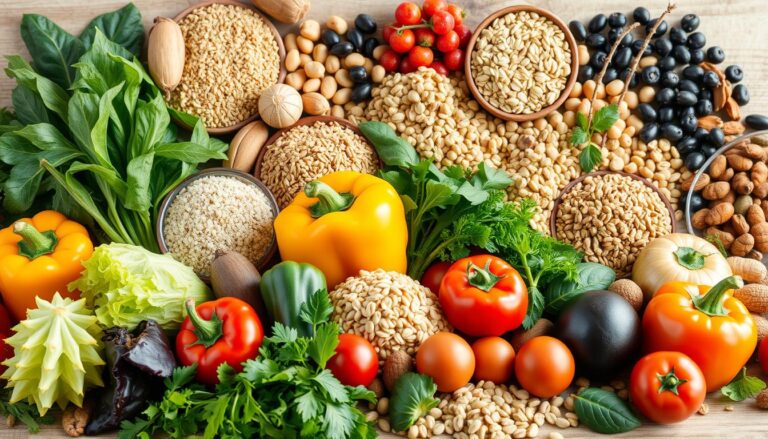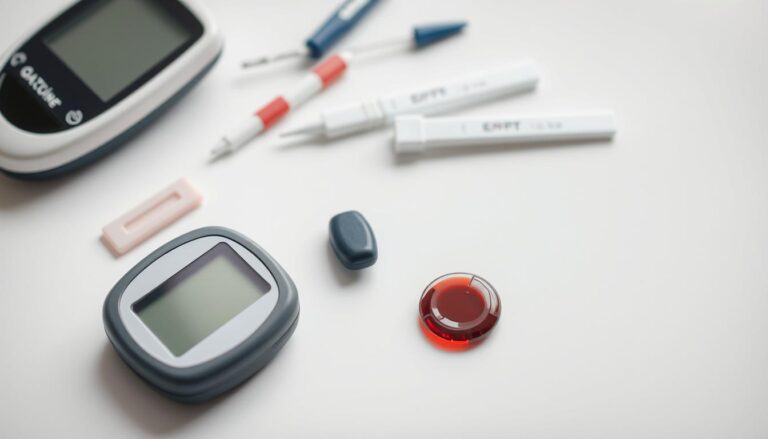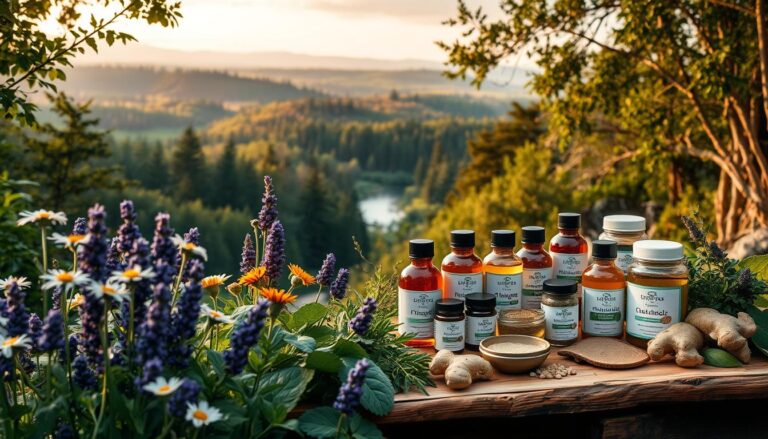Cancer: How to Reduce Your Risk with 5 Simple Lifestyle Changes
Table of Contents
Imagine a world where you can lower your cancer risk a lot. Cancer prevention isn’t about big changes. It’s about making small, steady choices that can change your health for the better. Almost half of all cancers can be prevented by making smart lifestyle choices.
Cancer prevention is not a secret science. It’s about taking care of yourself. By knowing how your daily habits affect your cancer risk, you can protect your health. Cancer awareness is about feeling strong and making smart choices.
In the field of oncology, studies show that changing your lifestyle can fight cancer well. Your body can be strong and fight off cancer if you do the right things. You can greatly lower your chance of getting this serious disease.
Key Takeaways
- Nearly 50% of cancer cases are preventable through lifestyle changes
- Small, consistent health choices can make a significant impact
- Cancer prevention is about empowerment, not fear
- Lifestyle modifications are powerful tools in cancer risk reduction
- Understanding your health choices is the first step to prevention
Understanding Cancer Prevention Basics
Cancer research shows a complex mix of risk factors that affect your health. Knowing these factors is key to preventing cancer. The disease affects millions, with 1 in 3 people in the U.S. facing a cancer diagnosis.
Identifying Common Risk Factors
Your chance of getting cancer depends on several things:
- Genetic predisposition
- Lifestyle choices
- Environmental exposures
- Age and family history
Genetic changes can cause up to 10% of cancers. Genetic testing can spot potential risks, especially for families with cancer histories.
The Role of Prevention in Cancer Risk Reduction
Prevention isn’t about avoiding all risks. It’s about making smart choices to lower your exposure. Taking proactive steps can greatly lower your cancer risk.
Key Statistics and Global Impact
Knowing about cancer is vital for understanding its impact. Hematologic cancers and solid tumors like breast and lung cancer are big health issues.
Prevention is always more powerful than cure.
By grasping these cancer prevention basics, you can protect your health and lower risks.
To get better results, you can benefit from the benefits of this nutritional supplement
Maintaining a Healthy Weight for Cancer Prevention
Your body weight is key in fighting cancer. Too much body fat raises your risk of many cancers. In the U.S., about 2 in 5 adults are obese, which increases cancer risk.
Fat cells make proteins that lead to high insulin and hormone levels. This can help cancer cells grow. Visceral fat, the fat around your organs, is especially risky.
Cancer Risks Associated with Weight
- Excess weight increases risk for 13 types of cancer
- More than 90% of obesity-associated cancers occur in people over 50
- Over 693,000 obesity-associated cancers occurred in 2021
Different cancers are linked to body weight in different ways. For women, breast cancer after menopause is often linked to obesity. Men are at higher risk of colorectal cancer if they are overweight.
| Cancer Type | Weight-Related Risk |
|---|---|
| Endometrial Cancer | Over 50% linked to excess weight |
| Prostate Cancer | Increased risk of aggressive forms |
| Breast Cancer | Higher risk after menopause |
Good news: losing weight can lower your cancer risk. Weight loss can decrease hormone levels linked to cancer, like insulin and estrogens.
The American Cancer Society recommends 150-300 minutes of moderate-intensity activity weekly to maintain a healthy weight and reduce cancer risk.
The Power of Nutrition in Fighting Cancer
Your diet is key in fighting cancer and keeping you healthy. Eating right can lower your cancer risk and help you during treatment. Knowing how food affects your body is crucial for your health.
Mediterranean Diet Benefits
The Mediterranean diet is great for preventing cancer. It’s all about eating whole, plant-based foods. These foods give you important nutrients and help protect you.
Studies show it can:
- Reduce inflammation in the body
- Lower oxidative stress
- Support immune system function
- Decrease risk of various cancer types
Cancer-Fighting Foods and Nutrients
Some foods are super strong against cancer. Experts say to add these to your meals:
- Cruciferous vegetables: Broccoli, cauliflower, and kale
- Berries: Rich in antioxidants
- Fatty fish with omega-3 fatty acids
- Whole grains
- Legumes and beans
Foods to Avoid or Limit
Some foods can raise your cancer risk. Try to eat less of:
- Processed meats
- Red meat (limit to 12-18 ounces weekly)
- Alcohol
- Sugary processed foods
Choosing the right foods can help fight cancer. Talk to a dietitian who knows about cancer nutrition. They can give you advice that fits your health needs.
Physical Activity and Cancer Risk Reduction
Physical activity is a strong ally in fighting cancer. Studies show that regular exercise can lower your cancer risk and boost your health.
The National Institutes of Health and American Cancer Society looked at 1.4 million people. They found that those who stayed active had a 7% lower risk of many cancers.
- Exercise may reduce risk of up to 13 different cancers
- Cancers impacted include liver, lung, kidney, breast, and colon cancer
- CDC recommends 150 minutes of weekly exercise
Cancer survivors gain a lot from being active. A 12-week program called Active Living After Cancer showed big health gains. The results were:
- Percentage of cancer survivors meeting physical activity recommendations increased from 29% to 60%
- 76% of participants completed the entire program
- Participants attended nearly 80% of sessions on average
The key to cancer prevention is regular, moderate exercise. Just 5-10 minutes of brisk walking or running each day can add 3 years to your life. Daily runners were 30% more likely to beat diseases than those who didn’t exercise.
“Exercise is medicine, and movement is a powerful strategy in cancer prevention and survival.”
Begin with small steps towards a healthier lifestyle. Try taking the stairs, walking during breaks, or joining fitness groups. Every step you take is a step towards better health and lower cancer risk.
Cancer and the Impact of Tobacco Use
Tobacco use is a major cause of cancer in the United States. Smoking greatly increases the risk of getting cancer. This has serious effects on health and cancer treatment outcomes.
Cigarettes cause about one-third of all cancer deaths in the country. The numbers are alarming: almost 90% of lung cancer deaths are due to smoking. This makes smoking the top cause of cancer deaths for both men and women.
Smoking Cessation Strategies
Quitting smoking can greatly lower your cancer risk. Here are some effective ways to stop:
- Nicotine replacement therapies
- Prescription medications
- Counseling and support groups
- Behavioral modification techniques
Second-hand Smoke Risks
Non-smokers are also at risk from tobacco. Secondhand smoke causes over 7,300 lung cancer deaths each year. Both kids and adults face higher cancer risks from breathing in secondhand smoke.
Benefits of Quitting
Quitting smoking has amazing benefits:
- Within 5-10 years, cancer risks for oral and throat cancers drop by half
- After 10 years, lung cancer risk reduces significantly
- 20 years after quitting, cancer risks approach those of never-smokers
Your journey to lower cancer risk begins with understanding tobacco’s impact. Take steps towards a healthier life.
Sun Protection and Skin Cancer Prevention

Keeping your skin safe from harmful UV rays is key to preventing cancer. Skin cancer is the most common cancer in the U.S., often caused by too much sun. Learning how to protect yourself from these rays can lower your cancer risk.
UV rays are most dangerous during certain hours. The Centers for Disease Control and Prevention say to protect yourself when the UV index is 3 or higher. These rays are strongest between 10 a.m. and 4 p.m. during daylight saving time.
- Use broad-spectrum sunscreen with SPF 15 or higher
- Reapply sunscreen every 2 hours
- Wear protective clothing with tightly woven fabrics
- Choose darker colored clothing for better UV protection
- Wear wrap-around sunglasses that block UVA and UVB rays
A suntan is not a sign of health, but rather evidence of skin damage. Over 3,000 emergency room visits happen every year because of indoor tanning accidents. This shows the dangers of artificial UV exposure.
Skin protection is not just a summer activity — it’s a year-round commitment to cancer prevention.
| Sun Protection Strategy | Effectiveness |
|---|---|
| Broad Spectrum Sunscreen | Blocks both UVA and UVB rays |
| Protective Clothing | Reduces direct skin exposure |
| Shade and Timing | Minimizes peak UV radiation exposure |
Remember, babies under 6 months should not use sunscreen. Instead, use protective clothing and stay in the shade. Regular skin cancer screenings and talking to a dermatologist can help find problems early.
Environmental Factors and Cancer Risk
Your environment is key to cancer risk. Studies show that daily toxins can harm your health and raise cancer chances.
Research by the National Institute of Health’s All of Us program shows how environmental factors link to cancer. With over 500,000 participants, it’s clear that our surroundings play a big role.
Common Environmental Toxins
Knowing about environmental toxins is vital. Many pollutants can increase cancer risk:
- Airborne pollutant particles
- Polycyclic aromatic hydrocarbons
- PFAS “forever chemicals”
- Industrial chemical compounds
Workplace Safety Measures
Staying safe from environmental dangers is crucial. Workplace safety means knowing and avoiding harmful substances.
| Risk Group | Cancer Risk Factors | Recommended Protection |
|---|---|---|
| Industrial Workers | Chemical Exposure | Protective Equipment |
| Urban Residents | Air Pollution | Air Filtration Systems |
| Agricultural Workers | Pesticide Exposure | Protective Clothing |
Reducing Exposure to Carcinogens
Lowering cancer risk is simple with the right steps:
- Use air purification systems
- Choose organic produce
- Avoid plastic containers with harmful chemicals
- Test drinking water for contaminants
Genetics account for only 10-15% of cancer risk, emphasizing the significant impact of environmental factors on cancer development.
The Role of Sleep and Stress Management

It’s important to know how sleep and stress affect cancer prevention. Research shows that your sleep and stress levels can change your cancer risk.
Sleep is key in fighting cancer. Studies link insufficient sleep – less than six to seven hours – to higher cancer risks. This includes:
- Breast cancer
- Prostate cancer
- Colorectal cancer
“Regular and restorative sleep is essential for maintaining a well-regulated immune system.”
Not getting enough sleep weakens your body’s defenses. Less sleep means a weaker immune system. This makes it harder for your body to fight off cancer.
| Sleep Duration | Cancer Risk Impact |
|---|---|
| Less than 6 hours | Significantly increased cancer risk |
| 6-7 hours | Moderate cancer risk |
| 7-8 hours | Lowest cancer risk |
Managing stress is also vital in preventing cancer. With 49 percent of Americans stressed often, it’s key to understand its health effects. Chronic stress can:
- Trigger inflammatory responses
- Activate unhealthy coping mechanisms
- Potentially compromise immune function
To lower cancer risk, focus on quality sleep and stress management. Try meditation, regular exercise, and a consistent sleep schedule. These can help your body fight off cancer.
Preventive Screenings and Early Detection
Cancer screening is a key way to protect your health and boost cancer survival rates. Finding cancer early can greatly improve treatment results and your outlook. Knowing when and how to get screened could save your life.
Regular health check-ups are vital for cancer awareness and prevention. Different cancers need different screening methods. These depend on your age, gender, and risk factors.
Age-Appropriate Cancer Screening Guidelines
Screening advice changes based on your age and health history. Here are some key guidelines for common cancers:
- Breast Cancer:
- Women aged 40-74 should get mammograms every two years
- Annual clinical breast exams recommended for women 45-54
- Monthly self-exams encouraged for early detection
- Colorectal Cancer:
- Screening recommended starting at age 45
- Colonoscopy every 10 years
- Stool DNA tests every 3 years
- Cervical Cancer:
- Pap tests every three years for women 21-29
- HPV testing every five years for women 30-65
- Prostate Cancer:
- Screening generally recommended for men 55 and older
- Earlier screening for African American men and high-risk individuals
Warning Signs and Symptoms
It’s important to know the warning signs for early cancer detection. Look out for:
- Unexplained weight loss
- Persistent fatigue
- Unusual lumps or growths
- Changes in skin appearance
- Persistent cough or breathing difficulties
“Prevention and early detection are your strongest allies in the fight against cancer.” – American Cancer Society
Talk to your healthcare provider to create a screening plan. It should fit your risk factors and medical history.
Conclusion
Improving your health doesn’t require big changes right away. Cancer prevention is a slow process. Small, steady steps can make a big difference.
Every choice you make, like what you eat or how you exercise, counts. It’s all part of your plan to prevent cancer.
It’s important to know that cancer risks differ for everyone. For example, Black/African Americans face higher cancer death rates. This shows the need for prevention plans that fit each person.
Regular health checks and a healthy lifestyle are key. Knowing your family’s health history is also important. This helps lower your cancer risk.
While making healthy choices can lower your cancer risk, they can’t stop it completely. Treatments like chemotherapy and radiation are still needed. Your best defense is a mix of healthy habits, regular doctor visits, and staying up-to-date on cancer research.
Your health journey is your own. Begin with small, achievable changes. Build lasting habits and stay committed to prevention. Every positive step you take brings you closer to a healthier, more empowered life.
FAQ
What is the most effective way to reduce my cancer risk?
To lower your cancer risk, try a mix of healthy habits. Keep a healthy weight, eat well, and exercise often. Avoid smoking and protect your skin from the sun. Also, get regular health checks.
How much can lifestyle changes actually impact cancer prevention?
Lifestyle changes can prevent up to 40% of cancers. Eating right, exercising, and avoiding tobacco are key. Also, limit alcohol and avoid harmful chemicals.
Are some types of cancer more preventable than others?
Yes, some cancers are more preventable. Lung and skin cancers are linked to lifestyle choices. Avoiding smoking and sun damage, and eating well can help.
How important is diet in cancer prevention?
Diet is very important for cancer prevention. A Mediterranean diet is best. It includes fruits, veggies, whole grains, and lean proteins. This diet can lower cancer risk.
Can exercise really help prevent cancer?
Yes, exercise is a powerful tool against cancer. It keeps you healthy, boosts your immune system, and lowers cancer risk. It’s especially good for breast, colon, and endometrial cancers.
How often should I get cancer screenings?
How often you need screenings depends on your age, gender, and risk. Talk to your doctor to set a screening plan. You might need mammograms, colonoscopies, and skin checks at certain times.
Does stress really increase cancer risk?
Stress’s link to cancer is complex. But, chronic stress can weaken your immune system. This might raise your cancer risk. Try to manage stress with meditation, exercise, and sleep.
How significant is sun protection in preventing cancer?
Sun protection is key to avoiding skin cancer. Use sunscreen, wear protective clothes, and stay out of the sun when it’s strongest. Regular skin checks can also help.
Can weight loss help reduce cancer risk?
Yes, losing weight is important. Excess fat, especially around your belly, increases cancer risk. Even a little weight loss can make a big difference.
Are environmental toxins a significant cancer risk?
Environmental toxins can raise your cancer risk. While you can’t avoid all toxins, you can reduce exposure. Choose safer products, be aware of workplace dangers, and make smart environmental choices.







